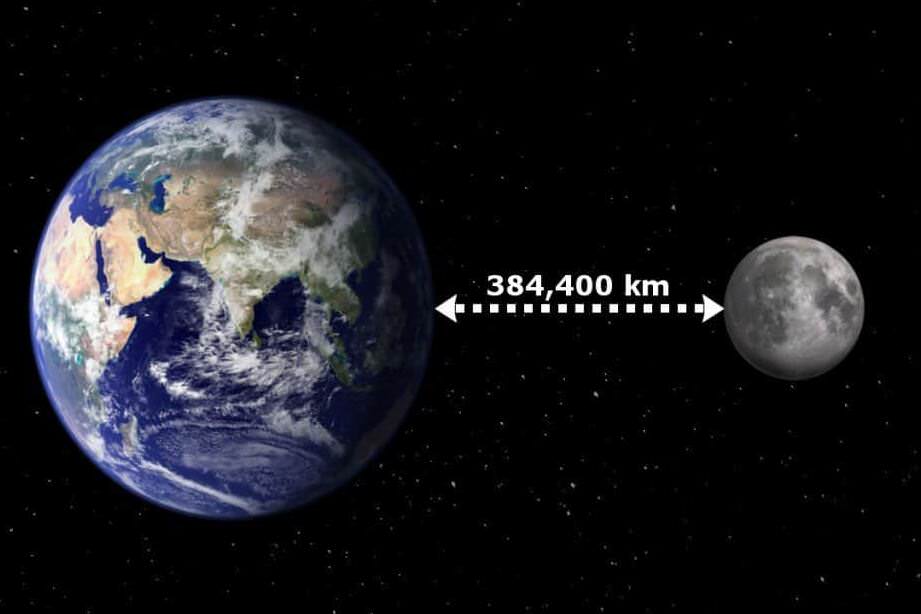
The distance from Earth to space, as measured in kilometers (km), is approximately equal to the distance from the planet’s surface to the outer edge of its atmosphere, where the vast expanse of the cosmic vacuum begins. In the 1970s, the Gemini 11 spacecraft reached a record altitude of 1,372 kilometers in its attempts to venture into space. However, this was still far from the desired milestone and only represented a hundredth of the necessary distance from Earth.


Understanding the concept of space
The vast expanse between Earth and space is a remarkable voyage, culminating when one surpasses the Earth’s atmospheric boundary and enters the emptiness of space. The commencement of this extraordinary expedition can be traced back to the conclusion of the protective layers surrounding any celestial body.
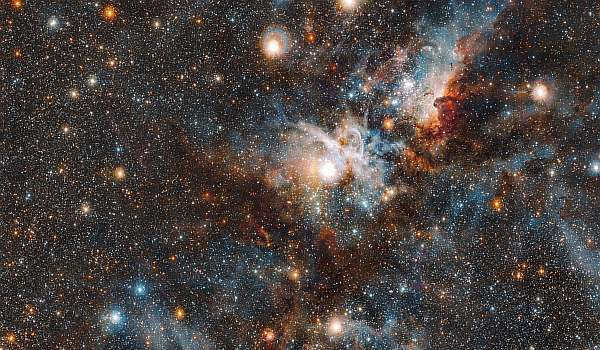
According to ancient Greek astronomers, the region where the boundaries of the atmosphere filled with air were marked was believed to be space.
In the geocentric system, the Earth was placed at the center of the universe, and the vacuum that surrounded it was an essential part of the world’s order.
It is important to note the following facts:
- Space was considered to begin at the end of the atmosphere, and this perspective remains unchanged. Modern science defines the boundary of outer space roughly at the edge of the atmospheric layers, but there is still no definitive consensus on this matter.
- There was no confusion for the IAF representatives when it came to defining the boundaries of space. It is well-known that at an altitude of 100 kilometers, the minimum velocity required for space travel is achieved, thus marking the beginning of outer space. Unfortunately, inaccurate sources and media outlets with limited knowledge of astronomical terminology often mistakenly refer to spacewalks by stratonauts or astronauts working on the ISS as heroic acts.
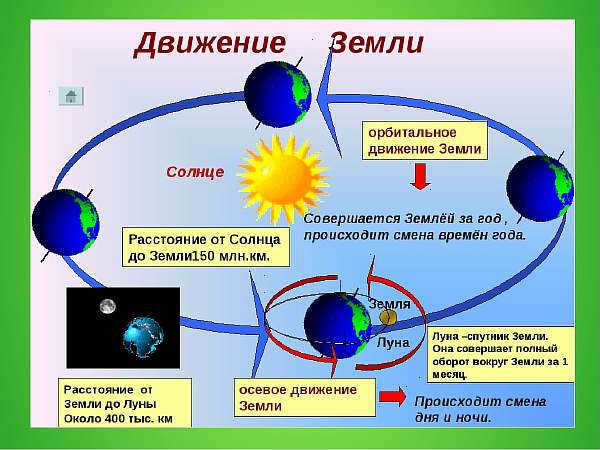

Measuring the Distance from Earth to Space and the ISS
The International Space Station, situated at a constant distance of 353 to 400 kilometers from the Earth’s surface, is not truly in outer space. Any knowledgeable scientist who understands the atmosphere will explain that even at 400 km, the ISS is still within the Earth’s rarefied atmosphere, specifically the thermosphere. Beyond that lies the exosphere, which stretches for 10,000 kilometers.
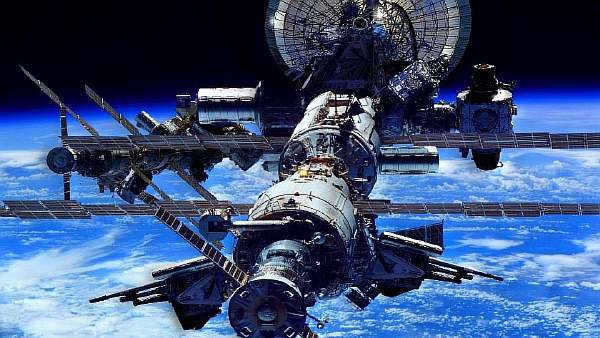
NASA has determined that the boundary of space is located at an altitude of 122 kilometers, thanks to the International Space Station (ISS). This is the point at which the spacecraft can only maneuver using its rocket engines, as conventional methods are no longer effective.
There have been some rather absurd attempts to establish a different boundary. For instance, some suggest that space begins at a distance of 8 kilometers, arguing that this is where meteors entering Earth’s atmosphere start to burn.
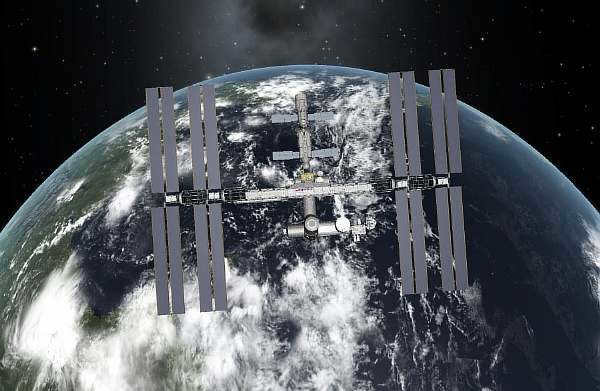
Wikipedia does not provide a definitive answer to this inquiry. For instance, there exists the notion of the start of space for the human physique. This occurs at around 19 kilometers, when the biological fluids within the human body start to boil at a perfectly normal temperature. This phenomenon is a result of a drastic reduction in atmospheric pressure.
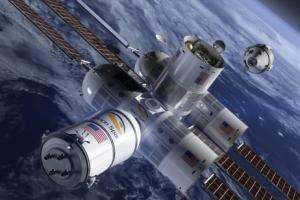
The Definition of the Word
When discussing the various meanings associated with this term, it is important to consider the philosophical definition, which encompasses the inherent order of the universe. By examining the perspective of ancient scholars and interpreting the term “space” as the expanse surrounding the center of the world, it becomes clear that debating its distance is nonsensical since it encompasses the entirety of the area surrounding the Earth.

According to scientific guidelines, space refers to the empty region beyond the Earth’s atmosphere. Therefore, determining the distance to space does not depend on the capabilities of spacecraft or the effects of fluids boiling within the human body, but rather on the point where the vast expanse devoid of atmosphere begins.
Although conventional boundaries have been established by reputable Earth organizations, these do not necessarily reflect the true distance to space. Space is characterized by boundless and infinite or limited areas between the atmospheres of celestial bodies:
- The atmospheric layer, which has the ability to reflect radio waves, is defined as the boundary at 100 km. Some groups consider this to be the dividing line between near space and Earth’s atmosphere;
- The Carman line starts at the official demarcation point where the first cosmic velocity is required to cover the distance;
- Researchers defined the boundary of the atmosphere almost a century ago at 320 kilometers, following the discovery of the Appleton layer which marks the end of the ionosphere;
- In 1950, the recorded atmospheric boundary was 1300 kilometers. However, this figure was questioned by the altitude reached by Gemini 11 at 1372 km.
- Back in the early 1900s, it was believed that the atmosphere had a maximum limit of 80,000 km. Surprisingly, this estimate was fairly accurate, as the exosphere starts to experience the strong influence of the Sun at this distance.
- At a distance of 90,000 km or 90,000,000 meters, there exists a collision point where the solar wind and the Earth’s magnetosphere intersect.
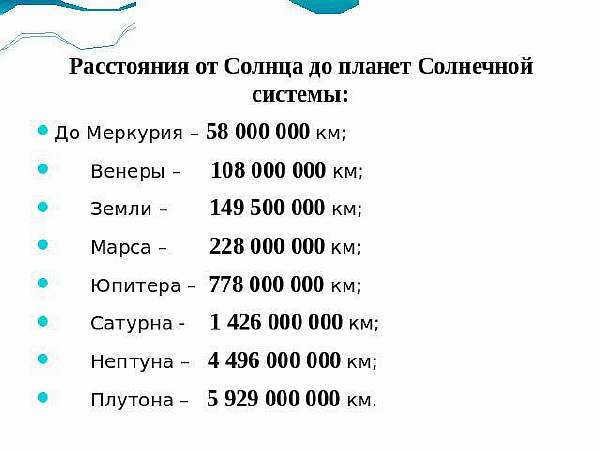
It only remains to determine which value to take as a given.
And thus, we can answer the question of the maximum distance to outer space. The existence of the Earth’s magnetic field has made this topic variable, ranging from 100 to 120 thousand kilometers, as this range fluctuates.
If we do not relate it to specific circumstances and processes in the Universe, then the distance to the outermost space can be considered the end of the atmosphere at an altitude of 144,000 kilometers.
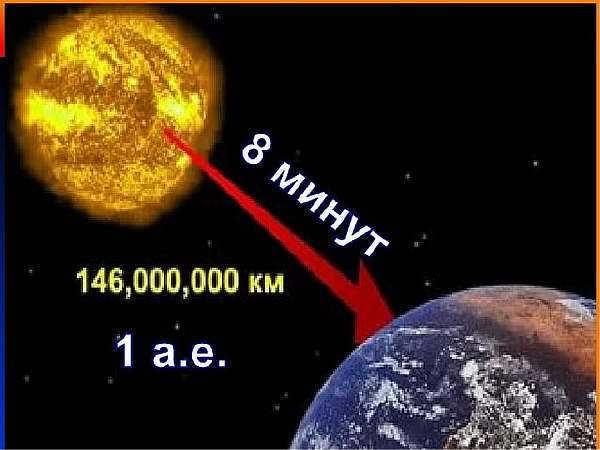
Estimated Explanation
At present, there is no recorded footage (captured from a space satellite or spacecraft) that provides an exact measurement of the distance in kilometers between the Earth’s atmosphere and outer space. The reason for this challenge lies in the fact that the boundary between the Earth’s atmosphere and outer space is not fixed, due to the ever-changing nature of the Universe.
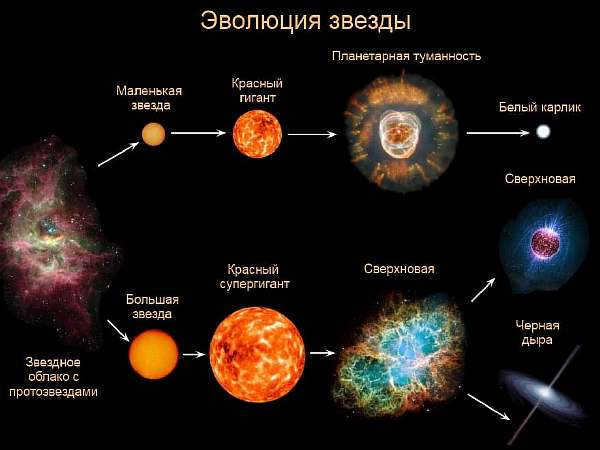
The Earth is in constant motion, following the laws of rotation, gravity, reactions, and transformations. When we look at photographs captured by powerful telescopes, we can witness fascinating phenomena.
The condition of the Earth’s atmosphere is influenced by the star it orbits. The exosphere, also known as the geocorona, is a part of the Earth’s envelope and is believed to primarily consist of hydrogen atoms.
There is a belief that the duration extends to approximately half the distance between the Earth and the Moon, which amounts to 190,000 kilometers. The expansion of the thermosphere contributes to this lengthening. This occurrence is typically observed during periods of heightened solar activity. As the thickness of the thermosphere expands, so does the distance between the Earth’s surface and the exosphere.
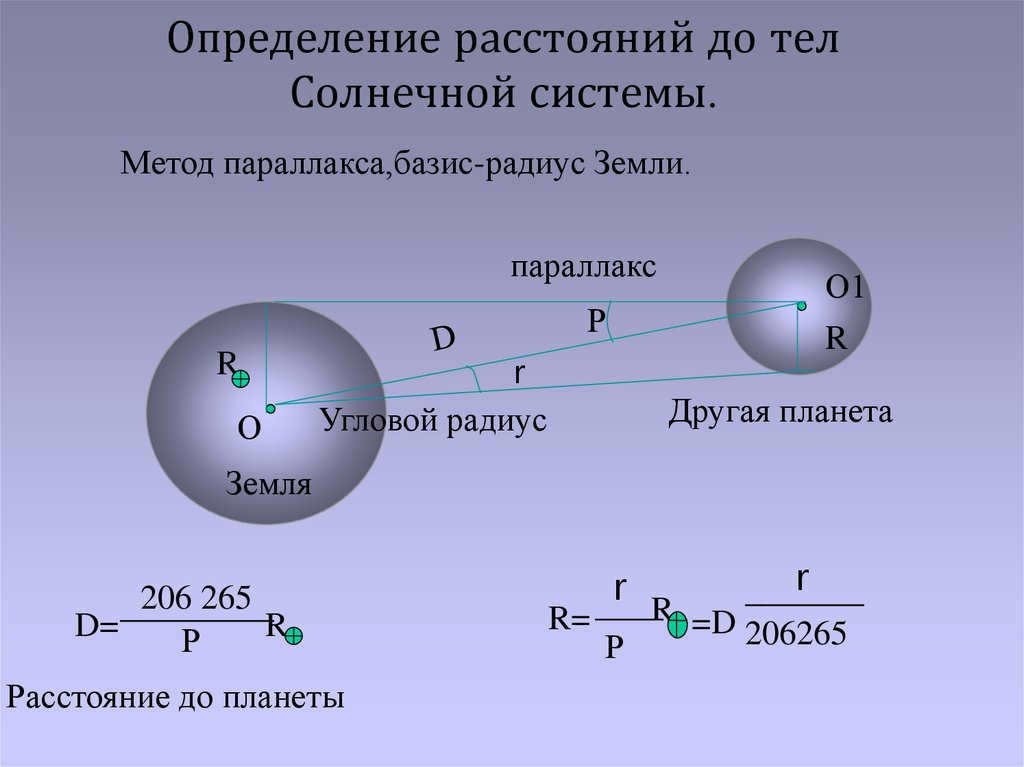
It is important to consider that the upper layer may increase by nearly 40,000 km during solar activity. Additionally, the distance can greatly vary depending on the absence of sunlight, ranging from 50 Earth diameters (600,000 kilometers) to 100 diameters (twice that amount).
One can think of the distance to space as approximately 260,000 kilometers, as this is the point where the gravitational pull of Earth stops and the gravitational force of the yellow dwarf star takes over.
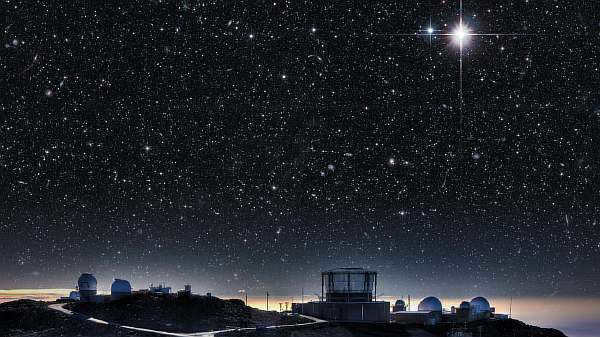
The reasoning here is even more straightforward: the absence of a gravitational force means the absence of an atmosphere, which is sustained by it. Consequently, this region can be classified as interplanetary space. According to the scientific definition of space, it is the area that exists between celestial bodies and planets.
If articles on internet portals and media outlets mention that astronauts from the International Space Station venture into outer space, there is some truth to it.
Indeed, the officially recorded distances are 122 and 100 kilometers, respectively.
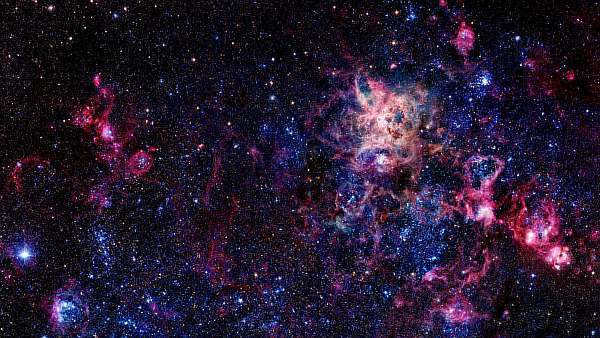
Scientific research, award-winning discoveries, and calculations have confirmed the accuracy of the other distance options. You can confidently consider them as a reliable point of reference.

The sky refers to the expanse above the Earth or the surface of any other celestial body that extends to the vastness of outer space. The boundaries of the sky, scientifically known as the atmosphere, are determined by the Earth or water surface and the point where the Earth’s gravitational pull ends.
This boundary is defined as the Karman Line, which is the height above sea level that is conventionally recognized as the demarcation between the Earth’s atmosphere and space. It is approximately 2000-3000 km from the Earth’s surface.
Generally, the sky is commonly described as the panoramic view that unfolds when observed from the Earth’s surface (or any other celestial body) towards the depths of space.

A report on ancient concepts regarding the Earth and the heavens?
An exploration of antiquated perspectives on the Earth and the celestial realm.

What is the name of these dog breeds?
What do you call these dog breeds?
Use the atlas to describe the phrase “from the earth to the sky”.

Learn the chart by heart, utilizing the textbook and atlas – what does “from the ground to the heavens” mean?
Commit the table to memory, using the textbook and atlas – explain the meaning of “from the ground to the heavens”.
Present a report on the ancient concepts regarding the Earth and the sky?
Deliver a report on the ancient notions pertaining to the Earth and the sky.

Looking into the Past: Ancient Notions of the Earth and the Sky
An exploration into the ancient beliefs surrounding the earth and the sky.

Atlas: the ultimate guide to hamsters from earth to sky?
Atlas: the ultimate guide that covers everything about hamsters, from the earth to the sky.

Can you solve the riddle of what is born in the sky and buried in the earth?
Can you solve the riddle of what is born in the sky and buried in the earth?
Discover the types of stones used in jewelry, from the ground to the sky.
Discover the types of stones used in jewelry, from the ground to the sky.
What is the world’s report on the ancient concepts regarding the Earth and the sky?
Discover the global analysis of historical perspectives on the Earth and the sky.

Where can you find a place to observe the starry sky on Earth?
Write down the location on Earth where you can observe the starry sky.
In the Environment category on this website, you will discover the answer to the question about the distance between the sky and the Earth. This question is suitable for students in grades 1 – 4. For more information on this topic, use the automatic search in the same category to explore answers to similar questions. At the top of the page, there is a button that allows you to ask a new question that aligns with your search criteria. The user-friendly interface also enables you to engage in discussions with other visitors about the topic of interest through comments.
The Latin-Russian and Russian-Latin dictionary of idiomatic phrases and expressions. – Moscow: Russian Language. N.T. Babichev, Y.M. Borovskoy. 1982.
Explore different definitions of “To the distance from the earth to the sky” in various dictionaries:
- Diurnal rotation of the Earth – The Earth’s axis is tilted with respect to the ecliptic plane (the plane of the Earth’s orbit). The diurnal rotation of the Earth refers to its rotation within a 24-hour period… Wikipedia
- Moon (Earth satellite) – The Moon, the Earth’s only natural satellite and the celestial body closest to us; an astronomical symbol. The Moon revolves around the Earth at an average speed of 1.02 km/sec in an elliptical orbit in the same direction… Big Soviet Encyclopedia
- There is a huge distinction, like the difference between heaven and earth, between various forms of gibberish. You will be amazed at the vast difference that exists between them. It’s like comparing heaven and earth, or the sun and a small candle. It’s like comparing an elephant to a speck of moss, or grand marble chambers to a humble abode. These comparisons can be found in Michelson’s Large Explanatory-Phraseological Dictionary.
- Zenithic distance is a celestial coordinate system used in astronomy to determine the location of stars or points on an imaginary celestial sphere. The position of these stars or points is determined by two angular measurements that uniquely define their position. This system is extensively described on Wikipedia.
- The celestial coordinate system is utilized in astronomy to describe the position of celestial bodies in the sky or points on an imaginary celestial sphere. The coordinates of these bodies or points are determined by two angular quantities (or arcs) that uniquely define their position… … Wikipedia
- Astronomy of Ancient Greece refers to the astronomical knowledge and beliefs of the ancient Greek people, regardless of their geographical location: whether it be Hellas itself, the Hellenized monarchies of the East, Rome, or early Byzantium. This topic covers… … Wikipedia
- This article needs to be wikified. Please adhere to the formatting rules for articles. The extraterrestrial heavens refer to the view of space from the surface of a celestial body other than Earth. This perspective includes… Wikipedia
What is the starting point of space from Earth? Discovering the World
The ongoing discussion among scientists for over a century revolves around determining the distance at which space commences from our planet. The intriguing aspect of this prolonged debate lies in the varying interpretations of what constitutes space.
For instance, scientists in Canada contend that space originates from the Earth’s surface at an altitude of 118 kilometers. What is the rationale behind this particular measurement? Climatologists and geophysicists base their calculations and predictions on observations made from this elevation.
Space commences from the Earth’s surface at an altitude of 118 kilometersPhoto: Depositphotos
According to radiation scientists, space is considered to be a radiation environment. They argue that the boundary between Earth’s surface and space should be determined by the amount of radiation that the planet receives. This reasoning seems logical. However, scientists studying gravity also have a valid argument. Gravity is a significant factor in determining the boundaries of space. These gravity scientists argue that real space from Earth begins at a distance of 21 million kilometers! How do they come to this conclusion? Through repeated observations and measurements, instruments have shown that at this distance, the gravitational field of our planet no longer has any influence. Other scientists support the idea that space begins at this 21 million kilometer mark. Photo: Depositphotos
If we define the boundary of space as the point where gravity no longer has a significant impact, then all manned expeditions that do not go beyond this point cannot be considered space expeditions. Consequently, the terms “cosmonaut” and “astronaut” would need to be replaced with alternative words. Only missions that have surpassed the Moon’s orbit would be classified as space missions.
NASA specialists argue that space begins at an altitude of 122 kilometers above the Earth’s surface. What is their reasoning behind this specific measurement? It is based on the fact that American astronauts shut off their onboard engines and initiate an aerodynamic descent from orbit at this altitude. Soviet cosmonauts consider the threshold to be at 80 km.
Photo: Depositphotos
However, the Americans were not entirely correct in claiming to be the pioneers of space, as Soviet cosmonauts also made ballistic entries into Earth’s atmosphere from various altitudes. On the other hand, meteors begin to emit light in the night sky’s atmosphere at around 80 kilometers. Based on this, the U.S. began to define astronauts as those who reached this altitude.
After a prolonged debate, scientists eventually reached a compromise. Since there is no distinct boundary between Earth’s atmosphere and interstellar space, the International Federation of Aeronautics suggested considering the altitude at which airplanes can no longer fly due to extremely low air density as the starting point of space. This altitude is 100 kilometers above the Earth’s surface. However, disputes among scientists regarding this compromise persist to this day.
How far is it from Earth to the Sun?
Earth, the only known inhabited planet in the Universe, is in close proximity to the Sun, which is the nearest star. The distance between them is a topic of much debate and curiosity. In this article, we will explore the unique features of Earth and the Sun, as well as delve into the question of their distance from one another.
The Enigma of the Red Giant
The entire celestial system is nothing more than the aftermath of a colossal cosmic explosion. Researchers have uncovered that the age of this radiant star is approximately 5 billion years. Life on our planet is profoundly influenced by the energy emitted by this celestial body. Every living organism on Earth is subject to the illuminating rays of the Sun. The immense energy released from the surface of the red giant has a profound impact on life, the magnetic field, and the atmosphere of our planet. This celestial body is many times larger and more massive than Earth, boasting a radius of 695.5 million kilometers. Deep inside its core, a fusion process takes place, unleashing light and energetic particles. The relative positions of celestial bodies in relation to each other play a pivotal role in the existence of life on our planet. Consequently, the precise distance from the Earth to the Sun can be seen below.
With an age of 4.5 billion years, the blue planet is situated as the third farthest away from the red giant. Its prime positioning is attributed to its suitability for the origin of life. Due to the Earth’s tilted axis, the planet encounters the luminary from various angles. Moving in a counterclockwise direction, the planet orbits the sun in an elliptical path. Despite the sun’s remarkable visibility from space, the objects in the solar system are separated by vast distances of kilometers. Astrophysicists have determined the precise number of kilometers between the Earth and the Sun.
Exact measurements
The average distance between the Earth and the Sun is approximately 149 million kilometers, which is 390 times greater than the distance between the Earth and its satellite, the Moon. The celestial object has two distinct points known as aphelion and perihelion. Aphelion refers to the Earth’s position when it is farthest away from the Sun along its elliptical orbit, while perihelion describes the moment when the celestial body is closest to the Sun.
According to the data, the distance from the Sun to the Earth in kilometers varies. During the aphelion period, which occurs from July 2nd to July 5th, the distance is approximately 152.083 million km. On the other hand, during the perihelion point, which takes place around January 2nd to 5th, the distance measures around 147.117 million km.
The surface of the globe receives sunlight in just 8 minutes and 19 seconds. Humans, on the other hand, only see the sun as it was 8 minutes ago. When measuring distances in outer space, scientists use light-years as a unit of measurement. A light-year is the distance that light travels in one year, which is equivalent to 365 days. The speed of light is approximately 300,000 kilometers per second.
While humanity has made great strides in exploring outer space, is it possible to travel the 150 million kilometers to reach the source of light? If we were to travel by car, it would take 200 years. In a modern airplane, it would take around 20 years. Using a spaceship, it would still take 8 months to reach the source of light. However, this would be a one-way trip, as the extreme temperature of the star, which reaches 10,000 degrees Celsius, would make survival impossible.
Related news:
Please remember to share. Thank you.
What is the distance from Earth to space?
The distance from the surface of the Earth to the outermost layer of the Earth is 50,000 kilometers, and to the moon it is 80,000 kilometers.
Space is defined as starting at 100 kilometers from the Earth.
The theoretical boundary of space is 100 kilometers. This is not a strict boundary, but rather an agreed upon convention. There are no physical markers or signs indicating the start of space and prohibiting airplane passage. The reasons for this convention are complex and not absolute.
At an altitude of 30 kilometers, you begin to enter the upper atmosphere.
Space comprises all matter in the universe and has a distance of 0 km. Outer space refers to the vast expanse of emptiness beyond the atmospheres of celestial objects. In the case of our planet, the demarcation of outer space is set at the Karman line, which is situated 100 km above sea level.
The planet we live on, Earth, is part of the vast universe. If we consider the distance between you and the room you are currently in, it is important to clarify what exactly we mean by “space”. Are we referring to the absence of air or just airless space? In reality, the Earth’s atmosphere does not have a definite upper limit. So, what characteristics of “space” are you interested in? Are you looking for an environment where breathing is no longer possible? It is worth noting that even at a relatively low altitude of 5 kilometers, it becomes difficult to breathe due to the thinning air. By the time you reach 10 kilometers, suffocation becomes inevitable. However, an aircraft flying at an altitude of up to 20 kilometers can still have enough air to remain airborne. In fact, a stratospheric balloon, known as a stratostat, can reach heights of up to 30 kilometers due to its strong lifting power. From this height, you can already see the stars clearly during the daytime. Once you reach 50 kilometers, the sky turns completely black, but there is still some air present, manifesting itself as vibrant polar lights caused by ionization of the air. At 100 kilometers, the presence of air becomes so minimal that a spacecraft can travel at a speed of several kilometers per second with almost no resistance. However, sensitive instruments can still detect the presence of individual air molecules. Once you reach 200 kilometers, even the most sophisticated instruments fail to register any air molecules, although the density of gas molecules per cubic meter is still higher than that in interplanetary space. So, where does space truly begin?
NASA defines the boundary of space as 122 km above the Earth’s surface. Once the shuttles reach this altitude, they transition from rocket engine maneuvering to aerodynamic maneuvering, utilizing the support of the atmosphere. However, there is an alternative perspective that places the boundary of space at a distance of 21 million kilometers from Earth. At this distance, the gravitational influence of the Earth becomes virtually nonexistent.
At a distance of 122 kilometers (400,000 feet), the atmosphere first becomes noticeable as the Space Shuttle begins its return to Earth from orbit. The rushing air causes the Shuttle to nose-up, generating friction and heating the hull, which in turn ionizes the surrounding air. The maximum altitude for observing polar lights, the last visible manifestation of the atmosphere from the Earth’s surface, is between 1000-1100 km (usually occurring at altitudes of 90-400 km). At 2,000 km, the atmosphere no longer affects satellites, allowing them to remain in orbit for thousands of years. Satellites can also observe the upper boundary of the Earth’s exosphere, known as the geocorona, at a distance of 100,000 km. Beyond this point, the manifestations of Earth’s atmosphere cease, and interplanetary space begins.
Yuri Gagarin, the first human to orbit the Earth, flew at an altitude of 200 km, circling the planet between 150 km and 300 km. The distance between St. Petersburg and Moscow is approximately 650 km.
At 122 km (400,000 feet), the atmosphere starts to manifest itself during the spacecraft’s reentry into Earth’s orbit. As the spacecraft moves, the rushing air causes it to nose-up, while the friction with the air leads to ionization and heating of the hull.
Despite the abundance of selfies and irrelevant content from Earth, there seems to be a lack of proper footage from space and actual flights. Instead, we are often presented with monotonous montage cuts and illogical conditions in orbit.
What is the distance between Earth and space? – prg-rb
What is the distance between Earth and space?
- Space is defined as beginning at a height of 100 kilometers above the Earth’s surface.
- )
- At an altitude of 30 kilometers.
- From 150 km to 300 km, Gagarin orbited the Earth at an altitude of 200 km, and from St. Petersburg to Moscow it is 650 km.
- The earth is situated within it. How far away are you from the room you are currently occupying? Be cautious about your response! You are not referring to outer space, but rather to the absence of air, correct? Strictly speaking, the atmosphere does not have a definitive upper boundary. What indicators of “space” are you specifically interested in? Where it is impossible to breathe? At just 5 kilometers, you can barely survive due to the lack of oxygen. At 10 kilometers, suffocation is guaranteed. Nonetheless, an airplane can still maintain sufficient air supply up to 20 kilometers to remain airborne. A high-altitude balloon can ascend up to 30 kilometers due to its significant lifting capacity. From this altitude, the stars are clearly visible even during daylight hours. At 50 kilometers, the sky is completely black, yet there is still some residual air present – this is where the northern lights “reside,” which is essentially ionized air. At 100 kilometers, the amount of air is so sparse that a spacecraft can travel at a speed of several kilometers per second with minimal resistance. However, the presence of individual air molecules can still be detected by instruments. At 200 kilometers, instruments will not register any air molecules, although the density of gas per cubic meter is still much higher than in interplanetary space. So, where does space truly begin?
- At 122 km (400,000 feet), the initial sign of the atmosphere becomes evident as the Space Shuttle begins its descent back to Earth from orbit. The rushing air causes the nose of the shuttle to tilt upward, while friction causes the air to ionize and heat up the hull.
- There is no distinct boundary between Earth’s atmosphere and the vacuum of space. As the ascent continues, the gas concentration and pressure decrease. It is widely accepted that the atmosphere extends approximately 800 km above the Earth, but the majority of the gas (99%) is concentrated within the first 122 km. Interestingly, the distance to the moon is about 380,000 km.
- The altitude of 128 km.
- At a distance of 122 km (400,000 ft), the Space Shuttle experiences the first noticeable effects of the Earth’s atmosphere during its return from orbit. As the shuttle moves, the rushing air causes the nose of the spacecraft to tilt upwards, and the friction between the air molecules and the hull causes the air to ionize and heat up.
- The maximum altitude of the aurora borealis, which is the last visible sign of the atmosphere from the Earth’s surface, is 10001100 km. However, highly visible auroras typically occur at altitudes of 90400 km.
- At a distance of 2000 km, the Earth’s atmosphere no longer has any impact on satellites, allowing them to remain in orbit for thousands of years.
- The upper boundary of the Earth’s exosphere, known as the geocorona, is seen by satellites at a distance of 100,000 km.
- After reaching this point, the manifestations of the Earth’s atmosphere come to an end, signaling the beginning of interplanetary space.
- The distance from the Earth’s surface to its outermost shell is approximately 50,000 km, while the distance to the moon is approximately 80,000 km.
- NASA has determined that the boundary of space is 122 km above the Earth’s surface. At this altitude, space shuttles transition from using rocket engines for maneuvering to utilizing aerodynamic maneuvering with the assistance of the atmosphere. However, there is an alternative perspective that places the boundary of space at a distance of 21 million kilometers from Earth, where the gravitational influence of our planet practically disappears.
- Space encompasses the entire material world and its distance is essentially 0 km. Outer space refers to the relatively empty region beyond the atmospheres of celestial bodies. For Earth, the boundary of outer space is defined as the Karman line, which lies 100 km above sea level.
- Would you like to know the practical implications of reaching a distance of 250 kilometers in space?
- The designated boundary of space is set at 100 kilometers. This is a somewhat arbitrary decision, as there are no physical markers or warnings indicating the precise point where space begins and aircraft passage is prohibited. Instead, this boundary is established based on a collective agreement. While there are various factors that contribute to this decision, they are largely conventional in nature.
The measurement of the distance between the Sun and the Earth in kilometers
Since childhood, we have all been aware that the Sun is a massive star situated at a considerable distance from our planet, shining brilliantly. However, very few people can accurately state the exact distance between the Sun and the Earth.
One of the main reasons for this discrepancy is that when we observe the Sun, it appears as a small, luminous disk in the sky. In reality, the Sun’s diameter is approximately a hundred times larger than that of our Earth, and its volume surpasses that of our planet by more than a million times.
The distance between our planet and the Sun is actually about 150 million kilometers. This distance varies because the Earth’s orbit is elliptical in shape. The greatest distance, known as aphelion, is recorded at 152 million kilometers in July, while the smallest, known as perigee, occurs in January at 147 million kilometers. To put it in perspective, the distance from Earth to its satellite, the Moon, is only 384 thousand kilometers.
Ancient Greece began measuring the distance from Earth to the Sun, although their methods were quite primitive. In the Middle Ages, the parallax method was used for measurement, but it didn’t yield significant results.
The initial data
Calculating the distance between the Sun and the Earth has been a subject of great interest for astronomers throughout history. One of the earliest attempts to accurately measure this distance was made by the astronomers Richer and Cassini in the 17th century. They utilized observations of Mars in the night sky and employed geometric calculations to determine the distance. Their calculations yielded a distance of 139 million kilometers, which, although underestimated, was a significant achievement considering the limited technology available at that time.
However, it wasn’t until the second half of the 20th century, during the scientific and technological revolution, that major advancements in measuring space distances were made. The advent of World War II played a crucial role in driving these advancements forward. One of the most significant breakthroughs was the development of the radar method, which revolutionized our ability to accurately determine distances in space.
The core concept of this technique involves the transmission of an impulse towards the celestial object, upon reaching it, a portion of the impulse is reflected and sent back to Earth. Special devices receive and analyze this reflected impulse. By measuring the time it takes for the impulse to travel the distance from Earth to the celestial body and back, the most precise distance calculation is determined.
Measurement
When measuring outer space, specific quantities like the light year and parsec are commonly used. The light year is defined as the distance that light travels in one year. With the speed of light being approximately 300,000,000,000 m/s, a light year is equal to 9.46073047 × 10*12 km.
If we measure the distance between our planet and the Sun in light years, it comes out to be around 8 light minutes. This is the amount of time it takes for the light emitted by the Sun to reach the Earth’s surface.
The light year and parsec are frequently employed in the measurement and study of distant celestial objects, including large stars found in various major constellations.
comments powered by HyperComments
Enjoyed this article? Share it with your friends!
Hadith regarding the gap between the sky and the earth
In a previous discussion, I highlighted the attempts made by some Islamic preachers to align the Quran and Sunnah with non-Islamic scientific theories, in order to avoid being labeled as “fanatics of anti-scientific myths”. Here, I present another example of such manipulation:
The hadith states, “The distance between the Earth and the first heaven is 500 years, and likewise between the first and second heavens, and between all the remaining heavens is 500 years.” The authenticity of this hadith is called into question, given the scientific discoveries which suggest a much greater distance – up to 20 million light years to the most recently discovered galaxy. However, according to the hadith, the distance to the last seventh heaven would only be 3500 years, based on the assumption that each gap is 500 years.
It is also possible that this hadith from the Messenger of Allah (PBUH) might serve as another miraculous discovery aiding scientific exploration of previously unknown realms. Specifically, the hadith may allude to the existence of a celestial body capable of traveling at a velocity millions of times greater than the speed of light, which is 300,000 kilometers per second" (full text available here).
First and foremost, there exists no authentic narration attributed to the Prophet (peace and blessings of Allah be upon him) regarding the precise distance separating the seven heavens from our earthly realm. Nonetheless, it is likely that his companions must have received some information along these lines, as none of them disputed the relevant hadith of Ibn Mas'ud. As Sheikh Ibn Usaymin so aptly posits:
"This saying is about Ibn Mas'ud, but it falls into the category of traditions where personal interpretation is not allowed, and it should be regarded as a saying that originates from the Prophet (peace and blessings of Allah be upon him), because Ibn Mas'ud (may Allah be pleased with him) is not known to have narrated stories from the Israelites" (Majmu'u fatawa wa rasa'ili-l-'Usaymin, 10/1125).
Incidentally, there is another well-known but unreliable hadith that provides even more conservative estimates. It is said that the Messenger of Allah (peace and blessings be upon him) asked the Sahabah, “Do you have any knowledge of the distance between the sky and the earth?” They replied, “No, by Allah, we have no knowledge of it.” He then stated, “Indeed, the distance between them is either 71, 72, or 73 years of travel. This same measurement applies to the sky above it (the nearest sky) and to all seven heavens, which are separated by equal gaps. Above the seventh heaven lies the sea, with a distance between its upper and lower layers equivalent to that between the neighboring heavens. Above this sea are eight goats, with a distance between their hoofs and knees equal to that between the neighboring heavens. And above their backs is a Throne, with a distance between its bottom and top equal to that between the neighboring heavens. And above all of this is Allah” (Abu Dawud, at-Tirmizi, Ibn Majah, al-Darimi, and others; at-Tirmizi, Ibn Huzaima, al-Hakim, Ibn Taymiyyah, and Ibn al-Qayyim considered it authentic, but al-Bazzar, Ibn Adi, al-Mizzi, and al-Albani classified the hadith as weak. See Silsilatu-l-al-ahadisi-d-da’ifati wa-l-mawdu’a, 3/398-402).
After quoting both hadiths, Ibn Hajar came to the following conclusion:
"In order to reconcile the conflicting numbers in these two traditions, we can accept that five hundred (years of travel) represents slow movement, akin to the leisurely pace of a pedestrian, while seventy (years of travel represents) fast movement, akin to the swift movement of couriers" (Fathu-l-Bari, 13/413-414).
‘Allah manages the affairs from the heavens to the earth, and then they ascend to Him in a day, the measure of which is a thousand years (according to your reckoning)’ (Qur’an, 32:5).” That means Jibril came down to the Prophet (peace and blessings of Allah be upon him) and then went up to the sky in a day equal to a thousand years – because the distance from the sky to the earth is equal to five hundred years (of travel). Coming down takes five hundred years and going up takes five hundred years, (the total is) one thousand years” (“al-Raddu ala-l-al-jahmiyyati wa-z-zanadika”, p. 70).
Therefore, there is no need to interpret this hadith differently from the pious ancestors and renowned Imams. Ibn Mas’ud intended to convey that the expanse of the visible universe, filled with countless stars, is equivalent to a thousand years of travel for a pedestrian or a rider. In the words of Sheikh Ibn Usaymin:
“If someone argues that this (hadith) can be disproven by what modern scholars mention today – that there are vast distances between us and certain stars and galaxies – then we should respond by saying: if the hadiths from the Messenger of Allah, peace and blessings be upon him, are authentic, then we will reject anything that contradicts them outright. However, if we have personally witnessed something with our own eyes, observed it with our sight and other senses, then in that case, we must choose one of two courses of action:
2) In the event that they cannot be merged, it will become evident that the hadith is weak, as reliable hadiths can never contradict something that is real and concrete.
However, if the undeniable reality contradicts the literal interpretation of the texts from the Book of Allah and the Sunnah, then the literal interpretation of the Book must be subject to interpretation until it aligns with the reality” (Majmu’u fatawa wa rasaili-l-‘Usaymin, 10/1126-1127).
Now the query arises: Is it possible for us to determine the vastness of the cosmos based solely on our everyday encounters? Can we promptly, without intricate mathematical computations, corroborate the hypotheses proposed by astronomers regarding the Sun’s trajectory around the focal point of the Galaxy, or at the very least, the Earth’s trajectory around the Sun? I recall Sherlock Holmes cunningly opposing all of this, stating: “However, my visual perception informs me that, in fact, the Sun orbits around the Earth”.
When discussing the initial inquiry, an individual may argue that in the 20th century, humanity embarked on a journey to send unmanned interplanetary stations into space, with many of them surpassing the Earth’s distance by not just hundreds, but thousands of years of travel by foot or by horse. To validate this claim, one can simply calculate the time it takes for a radio signal to traverse the path from Earth’s ATCs to these vehicles and back. However, my subsequent question to this individual would be: why do you assume that radio signals in the vast expanse of space travel in a linear trajectory rather than a curved one? To illustrate this point, consider how a person perceives their movement as straight while traversing the Earth’s surface, yet ultimately, they inevitably return to their starting point. This notion is not an original revelation on my part; in fact, several astrophysicists have arrived at the same conclusions.
"During the mid-20th century, Soviet scientist D.D. Ivanenko made a groundbreaking discovery while studying relic radiation. He proposed that the Universe, in fact, possesses two unique characteristics. Firstly, it is closed, meaning that it is self-contained and interconnected. Secondly, it does not conform to Euclidean geometry in all areas. This suggests that there are regions where parallel lines can intersect and even merge together. To illustrate the closed nature of the universe, imagine traveling in a straight line from one point, such as planet Earth. Eventually, after an immense amount of time, you would end up back at your starting point. In 2001, the theory put forth by D.A. Ivanenko and his followers received indirect confirmation. The American space probe WMAP (Wilkinson Microwave Anisotropy Probe) transmitted data to Earth regarding fluctuations in the temperature of relic radiation. Astrophysicists were particularly interested in the size and distribution of these fluctuations. Through computer modeling, it was determined that such fluctuations could only be observed if the Universe is finite and closed within itself."
Even if a beam of light travels through space, it eventually returns to its starting point after a considerable amount of time. Therefore, astronomers on Earth have the ability to observe the same galaxy from various locations in the sky, and even from different perspectives! If the WMAP data is verified, our understanding of the Universe will undergo a significant transformation” (excerpt from this source).
Consequently, the hadith regarding the distance between Earth and the heavens remains valid – just like the entirety of Allah’s religion. Also, consider reading:
Revisiting the Earth’s RotationTranslation of the Ayat of ‘NunIslam and the Theories of Non-Islamic SciencesIslam and Natural ScienceMeteors and the QuranPhysics of Electromagnetic Fields and Dormant Foolishness
All praises are due to Allah, the Lord of all worlds.

What is the distance between the earth and the stratosphere in kilometers?
Roman Solodov, you are mistaken: the USA did not burn during landing, but during takeoff. Here is an extract from the Russian Wikipedia:
"The Space Shuttle Challenger disaster occurred on January 28, 1986, when the Challenger spacecraft exploded in the 73rd second of flight at the very beginning of the STS-51L mission, resulting in the death of all seven crew members. The shuttle disintegrated at 11:39 a.m. EST (16:39 UTC, 19:39 MSK) over the Atlantic Ocean near the coast of the central Florida peninsula, United States.
The destruction of the aircraft was caused by damage to the o-ring of the right solid rocket booster during launch. The damaged ring created a hole in the side of the booster, causing a jet stream to blast towards the external fuel tank. This led to the destruction of the tail mount of the right solid rocket booster and the supporting structures of the external fuel tank. The components of the complex began to shift relative to each other, resulting in its destruction due to abnormal aerodynamic loads.
Contrary to popular belief, there was no immediate explosion of the entire propellant: the combustion of propellant components mostly occurred after the tank and the ship itself had completely collapsed[1][2]. The side boosters survived and flew around for a while before being destroyed by ground crews. The crew cabin, which was more robust than the overall orbital module, also remained intact but likely depressurized. The wreckage of the shuttle fell into the Atlantic Ocean.
As a result of the search and rescue operation, many fragments of the ship, including the crew compartment, were recovered from the bottom of the ocean. Although the exact time of the crew’s death is unknown, it appears that some crew members (at least Onizuka and Resnick) survived the destruction of the orbiter and were conscious – their personal air supply instruments were turned on. (Pilot Michael Smith’s instrument was also turned on, but it could have been either of the two aforementioned astronauts.) Since these instruments supply unpressurized air, the crew soon lost consciousness when the cabin depressurized. "Shuttles" at that time did not have an emergency escape system, which they were equipped with only after this disaster, and the crew had no chance of rescue (it should be noted that the emergency escape system developed and used later could not have ensured the survival of the crew in such a disaster anyway – it only provided for the possibility of alternately leaving the crew of the shuttle, which was in stable horizontal flight).
The astronauts could not survive the impact of the crew compartment against the water surface at a speed of 333 km/h, when the overload reached 200g.
After the disaster, the shuttle program was suspended for 32 months. To investigate the crash, U.S. President Ronald Reagan appointed a special commission headed by Secretary of State William Rogers. The commission concluded that the main factors that led to the disaster were NASA’s corporate culture and decision-making procedures. NASA executives had been aware since 1977 of potentially dangerous defects in the o-rings supplied by contractor Morton Thiokol, but paid little attention. They also disregarded the designers’ warnings about the dangers of launching the spacecraft in the cold temperatures of that morning and failed to report those concerns to their superiors. The Rogers Commission made nine recommendations to NASA that had to be implemented in order to resume shuttle flights.
The launch was observed by many spectators because among the crew on board was Christa McAuliffe, the first member of the “Teacher in Space” project. Media coverage of the disaster was unprecedented: one study found that 85% of Americans surveyed learned of the crash within an hour of it…".
The Earth’s atmosphere is a gas envelope that surrounds the planet. It is connected to the hydrosphere and the Earth’s crust. The outer boundary of the atmosphere gradually transitions into outer space. The composition of the atmosphere consists of various gases such as nitrogen, oxygen, argon, and carbon dioxide. Additionally, there are impurities present in the form of dust, water droplets, ice crystals, and combustion products. The ratio of the main elements in the air envelope remains consistent, with the exception of carbon dioxide and water which often fluctuate in quantity.
Gas Envelope’s Different Layers
The atmosphere is divided into multiple layers, situated one above the other, each with its own unique composition:
- boundary layer – directly adjacent to the planet’s surface, stretching up to a height of 1-2 km;
- troposphere – the second layer, with its outer boundary situated at an average altitude of 11 km, where most of the atmosphere’s water vapor is concentrated, clouds form, cyclones and anticyclones occur, and the temperature increases as altitude rises;
- tropopause – a transitional layer characterized by the halt in temperature decrease;
- The stratosphere is a layer that stretches up to 50 km in height and is divided into three zones: from 11 to 25 km, the temperature remains relatively stable; from 25 to 40 km, the temperature increases; from 40 to 50 km, the temperature remains constant at the stratopause.
- The mesosphere extends up to a height of 80-90 km.
- The thermosphere reaches heights of 700-800 km above sea level. At an altitude of 100 km, the Karman line is located, which is considered the boundary between Earth’s atmosphere and space.
- The exosphere, also known as the scattering zone, is where highly rarefied gas loses particles of matter and they escape into space.
Therefore, the stratosphere constitutes the portion of the Earth’s gaseous envelope that follows the troposphere. In this region, the temperature of the air, which remains constant throughout the tropopause, begins to undergo alterations. The stratosphere spans an approximate height of 40 km, with its lower boundary situated 11 km above sea level. Beyond this threshold, the temperature experiences gradual fluctuations. At an altitude of 25 km, the heating index commences a slow ascent. As one reaches 40 km above sea level, the temperature gradually increases from -56.5º to +0.8ºC. Subsequently, it remains close to zero degrees up until an altitude of 50-55 kilometers. The region between 40 and 55 kilometers is known as the stratopause, as the temperature remains constant in this area. It serves as the transitional zone from the stratosphere to the mesosphere.
Characteristics of the stratosphere
The stratosphere of our planet encompasses approximately 20% of the total atmospheric mass. The air in this region is so thin that it is impracticable for individuals to inhabit it without the aid of specialized spacesuits. This factor is among the primary causes for the relatively recent achievement of manned flights into the stratosphere.
One unique characteristic of the gas envelope surrounding the planet between 11 and 50 km above its surface is the scarcity of water vapor.
As a result, the formation of clouds is extremely rare in the stratosphere due to the lack of necessary materials. However, occasionally, a phenomenon known as pearlescent clouds can be observed, adding a stunning touch to the stratosphere (see photo below) at an altitude of 20-30 km above sea level. These delicate formations, which seem to emit an inner glow, are most visible during sunset or sunrise. The shape of these nacreous clouds resembles that of perispheric or peristo-cumulus clouds.
The primary characteristic that sets the stratosphere apart is its remarkable concentration of ozone throughout the atmosphere. This ozone is generated by the sun’s rays and serves as a shield, safeguarding all life on Earth from their harmful radiation. Situated approximately 20-25 km above sea level, the ozone layer encircles our planet. Though O3 molecules are present throughout the stratosphere and even near the planet’s surface, their highest concentration is found at this altitude.
It is important to mention that the Earth’s ozone layer measures only 3-4 mm. This is the thickness it would have if you were to place gas particles under normal pressure, such as near the planet’s surface. Ozone is created when the oxygen molecule breaks down into two atoms due to the impact of ultraviolet light. One of these atoms combines with a “complete” molecule, resulting in the formation of ozone – O3.
A perilous guardian
Ozone molecules act as a shield by absorbing ultraviolet radiation with a wavelength shorter than 0.1-0.2 microns. This crucial function protects the Earth from the harmful effects of solar radiation on living organisms.
Ozone is carried by wind currents near the Earth’s surface and can also be generated during thunderstorms, in copy machines, or through exposure to X-rays. Interestingly, high concentrations of ozone can be detrimental to human health. It forms in heavily polluted areas under the influence of sunlight. Exposing oneself to the so-called ozone smog poses a dangerous threat to life, as the bluish gas can inflict severe damage to the lungs. Furthermore, its presence negatively impacts plant growth, hindering their normal development.
The issue of ozone depletion started gaining attention in the scientific community during the 1970s. It is now widely understood that the depletion of the ozone layer is a result of atmospheric pollution, industrial utilization of freons and other compounds, deforestation, space rocket launches, and high-altitude aviation. In order to address this problem, the international community has implemented various agreements aimed at reducing the production of harmful substances. The primary focus has been on restricting the use of freons in the manufacturing of aerosols, refrigerators, fire extinguishers, disposable tableware, and other products.
Simultaneously, there is evidence indicating that the creation of ozone holes arises from natural phenomena. Noxious substances enter the atmosphere as a consequence of volcanic eruptions and seismic activity, stemming from faults in the oceanic crust. Currently, the issue of mankind’s primary role in the degradation of the ozone layer remains a subject of debate among numerous scientists.
Stratospheric exploration first began in the 1930s, and today we see combat and supersonic commercial airplanes flying up to an altitude of 20 km. Meteosondes, on the other hand, are capable of reaching an impressive altitude of 40 km above sea level. However, the record for the highest height reached by an unmanned balloon stands at an astonishing 51.8 km.
Interestingly, extreme sports enthusiasts have also started to venture into this part of the air envelope. Back in 2012, Austrian skydiver Felix Baumgartner made an incredible stratospheric jump from a height of nearly 39 km. Not only did he manage to break the sound barrier during his flight, but he also landed safely. However, Baumgartner’s record was later surpassed by Alan Eustace, the vice president of Google. In just 15 minutes, Eustace flew to a height of 40 km, also reaching the speed of sound.
Therefore, the stratosphere is now a more extensively studied section of the atmosphere compared to the early 1900s. Nevertheless, the outlook for the ozone layer, which is crucial for the existence of life on our planet, remains uncertain. While nations are reducing their production of Freon, some scientists argue that these efforts may not be sufficient, especially considering the current pace of action, while others contend that such measures are unnecessary as most of the harmful substances are naturally formed. Only time will tell who is correct.
Structure of Earth’s Atmosphere
When gazing at the heavens, particularly on a day without a single cloud, it is quite challenging to fathom the intricate and multi-tiered composition of the Earth’s atmosphere. This vast expanse of air varies greatly in temperature at various altitudes and serves as the backdrop for crucial processes vital to the survival of all plant and animal life on our planet.
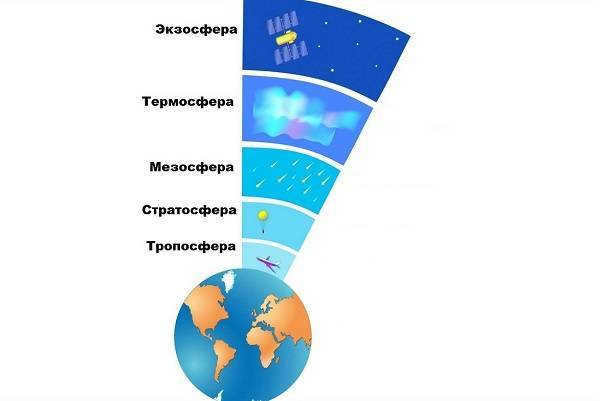
If it wasn’t for the intricate composition of the Earth’s atmospheric layers, life as we know it wouldn’t exist, and neither would the possibility of its emergence.
The ancient Greeks were the first to attempt to explore this part of our surroundings, but their conclusions were limited due to the lack of necessary technology. They couldn’t observe the boundaries between different layers, measure their temperature, analyze their component composition, and so on.
Primarily, it was observations of weather phenomena that sparked the curiosity of the most advanced thinkers, hinting that the visible sky is more complex than it appears.
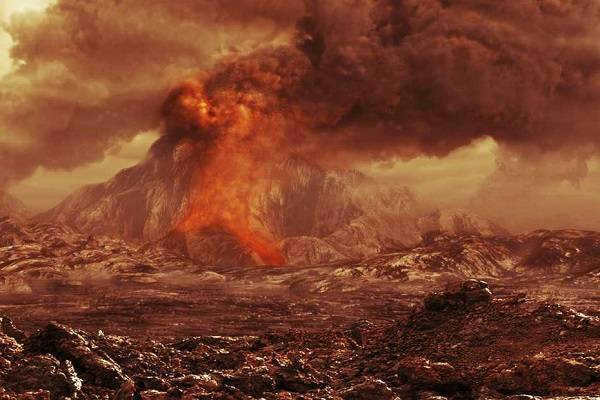
Then, the air became filled with masses of other particles due to volcanic eruptions, resulting in the formation of a secondary atmosphere. Once all the fundamental chemical reactions and particle relaxation processes had occurred, the current state of the atmosphere came into existence.
The Order and Characteristics of Earth’s Atmospheric Layers
The gas shell of our planet possesses a complex and diverse structure. Let’s examine it more closely, gradually ascending to the highest levels.
Troposphere
The troposphere is the lowest layer of the atmosphere, excluding the boundary layer. It reaches an altitude of approximately 8 to 10 kilometers above the Earth’s surface in polar regions, 10 to 12 kilometers in temperate climates, and 16 to 18 kilometers in tropical areas.
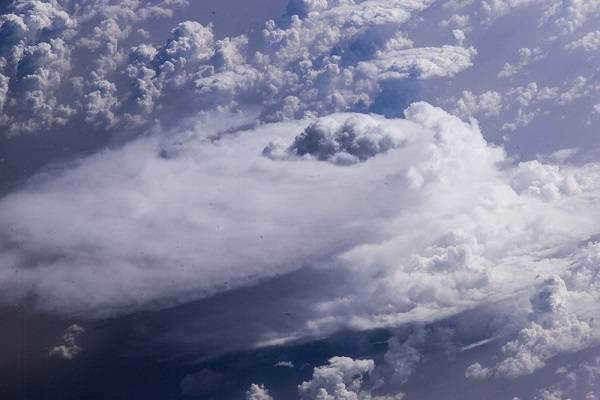
The troposphere contains the primary source of life for all living beings on the planet. It holds approximately 80% of the total atmospheric air, over 90% of the water vapor, and it is where clouds, cyclones, and other atmospheric phenomena are generated.
It is fascinating to observe the gradual decrease in temperature as one ascends from the Earth’s surface. Scientists have determined that for every 100 meters of elevation, the temperature drops by approximately 0.6-0.7 degrees.
Stratosphere
The stratosphere, which is roughly 45-50 kilometers in height, is the subsequent crucial layer. It commences at 11 kilometers and is characterized by subzero temperatures, with lows reaching as much as -57 ° C.
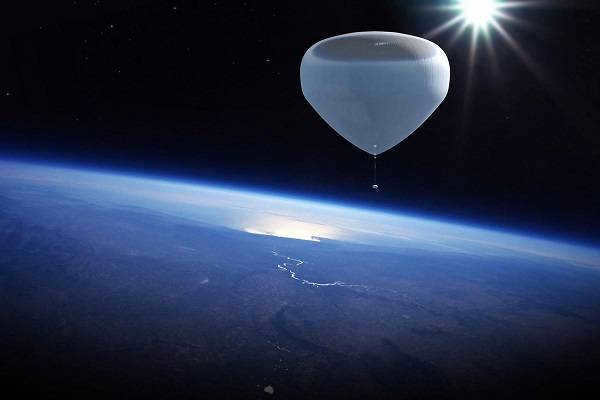
What is the significance of this layer for humans, all animals, and plants? Located at an altitude of 20-25 kilometers, the ozone layer plays a vital role in capturing ultraviolet rays emitted by the sun and minimizing their harmful impact on flora and fauna.
It is fascinating to observe that the stratosphere absorbs a multitude of radiation types originating from the sun, other stars, and outer space. The energy received from these particles leads to the ionization of molecules and atoms present in this layer, resulting in the formation of various chemical compounds.

The northern lights are a well-known and vibrant phenomenon that is caused by all of this.
Mesosphere
The mesosphere begins at approximately 50 kilometers and extends up to around 90 kilometers. In this region, the temperature gradient, or the difference in temperature with altitude, is not as pronounced as in the lower layers. At the upper boundaries of the mesosphere, the temperature is approximately -80°C. The composition of this layer consists of about 80% nitrogen and 20% oxygen.
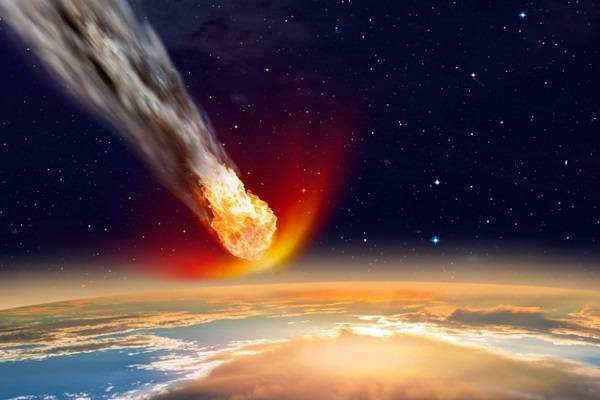
It should be noted that the mesosphere presents a challenge for any flying apparatus. Airplanes are unable to navigate this region due to its thin air, and satellites cannot operate at such a low altitude due to the high air density.
Furthermore, an intriguing characteristic of the mesosphere is that it serves as the final destination for meteorites that collide with the planet. These meteorites burn up upon entry into the mesosphere. The exploration of these remote layers is conducted using specialized rockets, although the effectiveness of the process remains limited, resulting in unsatisfactory knowledge about this region.
Thermosphere
Right above is the thermosphere. The thermosphere, reaching heights of up to 800 kilometers. In many aspects, it resembles the vastness of outer space. In this region, a strong presence of cosmic radiation, radiation, and solar radiation can be observed.

This amazing and stunning natural phenomenon known as the northern lights is a result of various factors.
The thermosphere’s lower layer experiences heating up to approximately 200 K and even higher temperatures. This occurs due to the intricate processes of atom and molecule interactions, including recombination and radiation.
The upper layers of the thermosphere receive heat from magnetic storms and electric currents that are generated within. The temperature within this layer is not consistent and can undergo significant fluctuations.
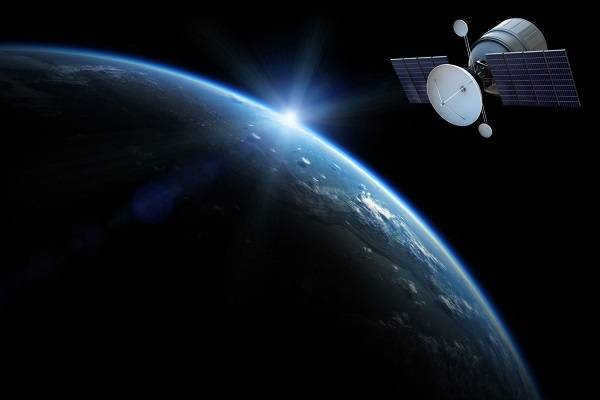
The majority of artificial satellites, ballistic bodies, manned stations, and other spacecraft operate in the thermosphere. Additionally, this region is used for conducting tests of various types of weapons and rockets.
Exosphere
The exosphere, also known as the scattering sphere, is the outermost layer of our atmosphere, marking the boundary with interplanetary space. It starts at an altitude of approximately 800-1000 kilometers.

As we ascend through the atmosphere, the layers become less dense, eventually reaching a point where the air is extremely rarefied. At this altitude, any particles from the outside are simply carried away into space due to the very weak gravitational force.
This transition occurs at an altitude of approximately 3000-3500 km. In this region, particles are almost nonexistent, creating a near-space vacuum. Instead of individual particles in their usual state, plasma, which is often fully ionized, dominates this area.
The Significance of Earth’s Atmosphere in Sustaining Life
Here is an illustration depicting the primary layers comprising the composition of our planet’s atmosphere. While there may be additional regions in a more intricate diagram, they hold a lesser significance in comparison.

It is worth noting that the atmosphere plays a vital role in sustaining life on Earth. The presence of a significant amount of ozone in the stratosphere protects flora and fauna from the harmful effects of radiation and space debris.
Furthermore, the stratosphere is where weather patterns are formed, and all atmospheric phenomena, such as cyclones and winds, originate and dissipate, ultimately influencing human well-being and the overall health of all living organisms and plants.
That’s why there’s currently a widespread campaign against the harmful emissions produced by cars and factories. Environmentalists are deeply concerned about the depletion of the ozone layer, and parties like the Green Party are pushing for strict measures to protect nature. It’s the only way to ensure a sustainable future for our planet and prevent the worsening of climate conditions.
The exploration of outer space is governed by international law, with the principles being established through the 1967 treaty that has been ratified by over 100 countries. Interestingly, there is still no consensus among scientists and governments regarding the exact distance that marks the beginning of space.
What is the definition of space and its starting point?
The term “space” has its roots in ancient Greece, where it denoted order, structure, and tranquility. In those times, the universe was seen as the antithesis of chaos and disarray. Over time, the meaning of the term evolved. In modern scientific discourse, space refers to the region beyond the gaseous envelopes surrounding celestial bodies. Specifically, the Earth’s atmosphere is considered to be the realm surrounding the planet, wherein the gaseous medium rotates along with the Earth as a whole.
To pinpoint the precise beginning of space from a scientific standpoint, it is imperative to determine the boundary where the atmosphere concludes.
The Earth’s gaseous envelope can be characterized by distinct layering involving 5 spheres.
The first layer from the surface of the Earth is known as the troposphere. This is where approximately 80% of the atmosphere’s mass is concentrated. The troposphere’s height varies, ranging from 8-10 kilometers at the poles to 16-18 kilometers in the tropics.
The second layer, known as the stratosphere, begins at around 8-16 kilometers and extends up to 50-55 kilometers from the Earth’s surface. Within the range of 20-30 kilometers lies the ozone layer, which serves as a protective shield against the harmful effects of ultraviolet rays for all life on the planet. The absorption of ultraviolet rays by ozone results in the heating of the air.
Moving further upwards, we reach the mesosphere, which extends up to a height of 80 kilometers. As the distance increases, the temperature drops significantly, reaching as low as -90 degrees Celsius.
Beyond the mesosphere, from its upper boundary to a height of 500 kilometers, lies the thermosphere. The gas composition of the thermosphere is similar to that of the Earth’s surface, but oxygen exists in its atomic state.
The exosphere is the highest and least dense layer of the atmosphere. It is composed of ionized gas, also known as plasma, and the particles within it have the ability to easily escape into outer space. The exosphere has a significantly lower mass compared to the rest of the atmosphere, with its mass being 10 million times less. Its lower boundary starts at a distance of 450 km above the Earth’s surface, while its upper boundary extends to several thousand kilometers.
According to the scientific definition, space would be considered to begin in the exosphere, as this is where the gaseous medium no longer rotates in unison with the Earth.
An Approximate Definition of Distance
The question of where space begins in relation to Earth is subject to various interpretations among scientists, who rely on different physical parameters to form their conclusions.
One proposed notion is that space commences once the Earth’s gravitational influence ceases, at a distance of approximately 21 million kilometers.
Another perspective is that space begins at the Armstrong Line, which is situated at an elevation of 18.9-19.35 kilometers, where water begins to boil at the temperature of the human body. Consequently, for the human body, space would commence at this point. Following the launch of the first artificial satellite into space in 1957, the concept of “near space” (ranging from 20 to 100 km) was introduced.
During the 1950s, Theodore von Karman, a renowned researcher, made a significant discovery. He found that at a distance of 100 km from the Earth, a flying object reaches the critical speed required to achieve lift-off and becomes a satellite of the Earth. Interestingly, at this altitude, traditional wings are no longer necessary.
As advancements in scientific measurements continued, American and Canadian scientists determined that the boundary between atmospheric winds and space particles occurs at an altitude of 118 km. This prompted them to propose using this value as the defining point for outer space.
The National Aeronautics and Space Administration (NASA) of the United States government later established a distance of 122 km as the point where shuttles transition from using maneuvering engines to relying on aerodynamics. Additionally, the Air Force officially recognized 80.45 km as its own limit.
In 1979, the Soviet Union put forth a proposal to consider any altitude above 100-110 km as the boundary of space.
Countries have yet to come to a consensus regarding the boundary of airspace due to the challenge of determining the altitude at which state sovereignty ends.
The FAI (International Aviation Federation) designates a flight as a space flight once it reaches the Karman line, which is 100 km above the Earth’s surface. At this height, a vehicle is capable of completing a full orbit around the Earth before entering the denser atmosphere and beginning its descent.
International space law is founded on the following principles:
- There are no national borders in outer space.
- Space exploration is conducted for the benefit of all humanity in accordance with international law, including the UN Charter.
- Placing weapons of mass destruction in space is explicitly prohibited.
- The responsibility for artificial space objects lies with the state that launched them.
- Countries consider each other’s interests and hold consultations.
- Astronauts serve as representatives of humanity.
These regulations can sometimes clash with the priorities of major world powers, as the question of sovereign control over airspace is interconnected with the regulation of space beyond the Earth’s atmosphere.
What is the altitude of the International Space Station?
The altitude of the International Space Station ranges from 330 to 417 kilometers above the Earth. This range provides the ideal conditions for conducting weightless experiments and is also economically viable for transporting astronauts and cargo.
Factors behind alterations in distances
The variation in distances between the International Space Station (ISS) and Earth is primarily driven by the frictional force encountered in the atmosphere. The impact of atmospheric particles on the station’s hull results in deceleration and a loss of altitude. To compensate for this, the engines of incoming spacecraft are utilized to raise the orbit.
Previously, the distance between Earth and the ISS orbit ranged from 330 to 350 kilometers. However, due to the limitations of the American shuttles, it was not possible to increase the orbit beyond this range.
Following the discontinuation of the shuttle program, the station was able to move 417 kilometers away from Earth in 2014. Currently, the ISS is positioned at a distance of 406 kilometers.
The change in distance at a specific location is caused by space debris. In order to prevent any collisions, continuous monitoring of the movement of discarded parts of aircraft is carried out online. When there is a potential risk of impact, the crew on the station executes an evasive action. The engines play a crucial role in providing the necessary force to propel the ISS to a higher orbit.
Frontiers in Space: A Visual Journey
- 2 km – This is the altitude where 99% of the world’s population resides.
- 2-3 km – Non-acclimatized individuals may start experiencing mountain sickness at this altitude.
- 4.7 km – The International Astronautical Federation (IAF) mandates additional oxygen supply for pilots and passengers.
- 5.0 km – At this altitude, the atmospheric pressure is at 50% of what it is at sea level.
- 5.1 km – The highest elevation on Earth (with the highest populated area being La Rinconada, Peru).
- 5.5 km – This altitude marks the halfway point in terms of the mass of the atmosphere (Mount Elbrus). The sky’s brightness at the zenith measures between 646 and 1230 cd/m².
- 6 km – The boundary of human habitation (temporary settlements of Sherpas in the Himalayas) and the limit of life in the mountains.
- The snow line in Tibet and the Andes is located up to 6.5 km above sea level, while in all other places it is lower. In Antarctica, it is located up to 0 m above sea level.
- The highest stone building is Mount Llullaillaco in South America, reaching a height of 6.6 km.
- At 7 km above sea level, humans reach the limit of adaptability for prolonged stay in the mountains.
- At 7.99 km above sea level, the boundary of the homogeneous atmosphere is reached. At this level, the atmosphere has the same density as at sea level and a brightness of the sky decreases in proportion to the decrease in height.
- At 8.2 km above sea level, death without an oxygen mask becomes a real possibility. Even a healthy and trained person can lose consciousness and die at any moment. The brightness of the sky at zenith is measured to be 440-893 cd/m².
- The highest point on Earth is Mount Everest, reaching a height of 8,848 km. It is considered the limit of accessibility by foot to space.
- At a distance of 9 km, the human body reaches its limit of adaptability to breathing atmospheric air in the short term.
- The boundary between the troposphere and stratosphere at mid-latitudes is at 10-12 km. It is also the point where ordinary clouds stop rising, and the air becomes more rarefied and dry.
- At 12 km, breathing air is equivalent to being in space and can lead to loss of consciousness.
What is the distance between Earth and space: kilometers from the outer surface
The scientifically determined distance between Earth and space, for instance, in kilometers, is approximately equal to the distance from the surface of a celestial body to the outer edge of its atmosphere, where the vast cosmic void commences. The Gemini 11 spacecraft achieved the highest altitude in human history’s endeavors to breach the confines of space until the 1970s, reaching a height of 1,372 kilometers. However, this milestone was still far from the coveted threshold and constituted merely a hundredth, not even a tenth, of the requisite distance from Earth.

Understanding Space
Space is a vast expanse that stretches far beyond the Earth’s atmosphere. It is a journey of considerable distance, starting from the point where the protective layers of any planet come to an end and continuing until it crosses the threshold into the emptiness of space.

According to ancient Greek astronomers, the location of space was precisely defined by the boundaries of the air-filled near-Earth space.
The geocentric model positioned the Earth at the center of the universe, with the surrounding vacuum being an essential component of the cosmic order.
Several points should be highlighted:
- Space was believed to begin at the end of the atmosphere, and this perspective remains largely unchanged. Modern science identifies the outer space boundary as roughly the edge of the atmospheric layers, although there is still no definitive consensus on this matter.
- There was no debate for the IAF representatives when it came to defining the boundaries of space. According to their understanding, space begins at an altitude of 100 kilometers, where the first space velocity is necessary for flight. This definition differs from what is often mistakenly reported in the media, where terms like “stratonauts” and “ISS” are used to describe activities that do not actually take place in space.
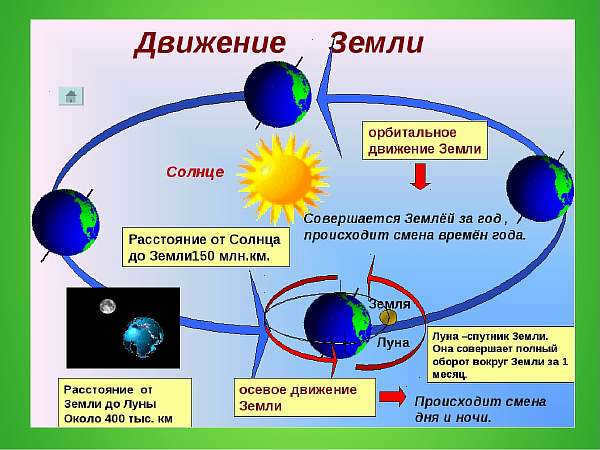
How Far is the Distance from Earth to the Sky and the ISS?
The International Space Station, which is permanently situated above the Earth’s surface at a distance ranging between 353 and 400 kilometers, is not technically located in outer space. Any scientist knowledgeable about the atmosphere will explain that even at 400 km, the ISS is still within the Earth’s rarefied atmosphere, specifically the thermosphere. Beyond that lies the exosphere, which spans a length of 10,000 kilometers.
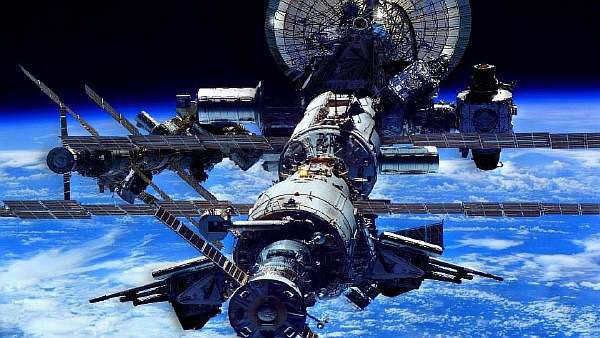
NASA has determined that the International Space Station (ISS) has provided evidence to set the boundary of space at an altitude of 122 kilometers. This is because at this height, the spacecraft can only maneuver using rocket engines, as conventional methods are no longer effective.
There have been some rather absurd attempts as well. For instance, there was a proposal to establish a distance of 8 kilometers as the starting point of space, based on the argument that this is where meteors entering the Earth’s atmosphere start to burn.
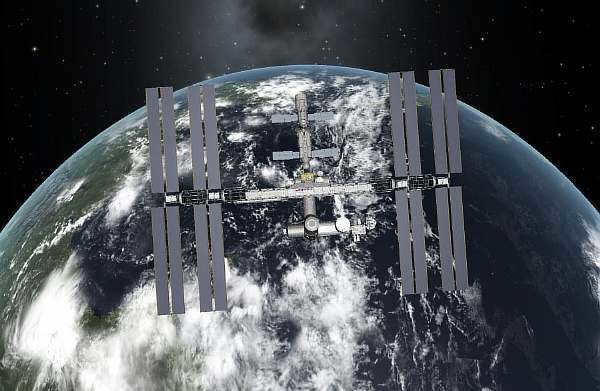
Wikipedia does not provide a conclusive response to this inquiry. There exists, in fact, a notion known as the commencement of outer space for the human physique. This occurs at around 19 kilometers, at which point the biological fluids within the human body reach a boiling point under normal temperature conditions. This phenomenon is attributed to an extreme reduction in atmospheric pressure.
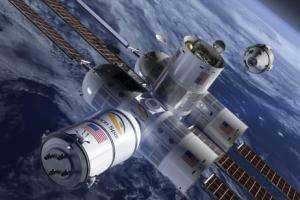
The significance of the term
When discussing the various meanings associated with this particular term, it is important to consider the philosophical definition, which suggests a specific arrangement of the world. Looking back at the interpretations of ancient scholars, who viewed “space” as the area surrounding the center of the universe, it becomes clear that debating its distance is meaningless, as it encompasses the entirety of the Earth’s surroundings.

The scientific definition states that the area outside the Earth’s atmosphere is the void space. Therefore, determining the distance to space is not dependent on the technical capabilities of the shuttle or the behavior of fluids in humans, but rather on the point where the vast expanse and complete absence of atmosphere begin.
The existence of conventional boundaries, even those defined by reputable Earth organizations, does not indicate that the distance from Earth’s surface represents the true distance to space. Space is filled with boundless and infinite or limited regions between the atmospheres of celestial bodies:
- 100 km marks the boundary of the atmospheric layer that can reflect radio waves. Some consider it the boundary between near space and Earth’s atmosphere;
- The Carman line starts at the official demarcation point, where the first cosmic velocity is required to cover the distance;
- Approximately a hundred years ago, scientists defined the boundary of the atmosphere at 320 kilometers. This significant discovery marked the end of the ionosphere known as the Appleton layer;
- In 1950, the recorded atmospheric boundary was 1300 kilometers. However, this figure was called into question when Gemini 11 reached an altitude of 1372 km;
- Back in the early 20th century, the supposed limit of the atmosphere was believed to be 80 thousand km. Interestingly, this estimation is quite accurate as it is at this distance that the Sun’s intense influence on the exosphere begins;
- At a distance of 90,000 km or 90000,000 meters, there exists a point of interaction between the solar wind and the Earth’s magnetosphere, resulting in the formation of a shock wave.
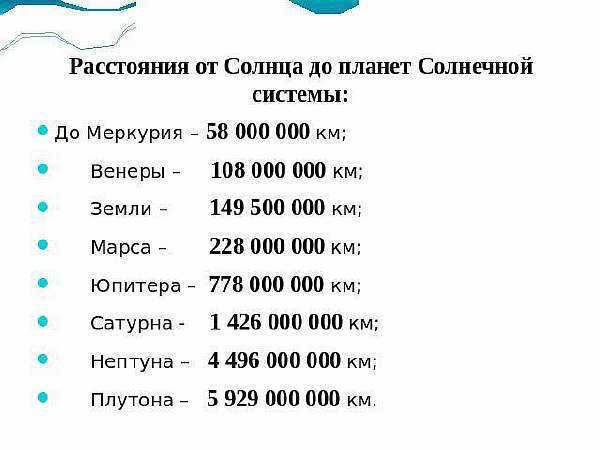
We just need to figure out which number to use as a given.
And thus, we can determine the maximum distance to outer space. The presence of the Earth’s magnetic field has made this subject of speculation variable – ranging from 100 to 120 thousand kilometers, as this range fluctuates within those limits.
If we don’t tie it to specific circumstances and processes in the Universe, then the distance to the furthest reaches of space can be safely considered the edge of the atmosphere at an altitude of 144,000 kilometers.
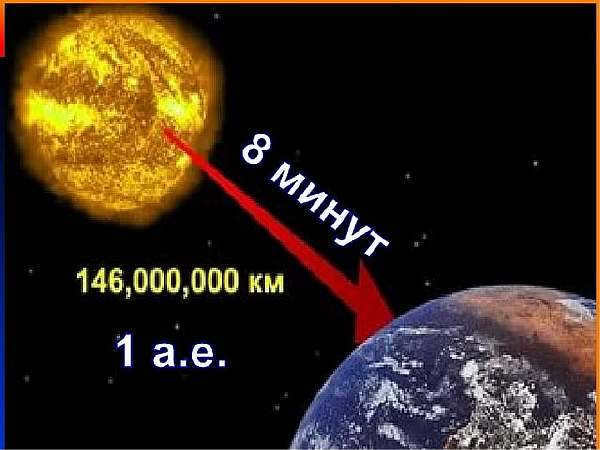
Approximate explanation
As of now, there is no video (captured from a space satellite or spacecraft) available to accurately determine the exact distance in kilometers from the Earth’s surface to the outer edge of its atmosphere. This is because the boundary between the Earth’s atmosphere and outer space is not stable, making the measurement process complicated.
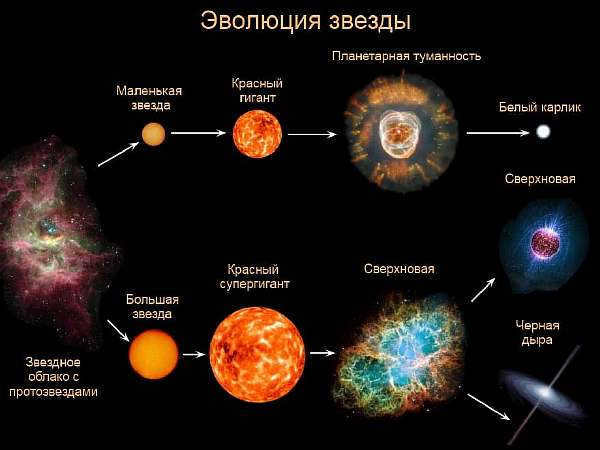
The Earth is in constant motion, following the laws of rotation, gravity, reactions, and transformations. By examining photographs captured by powerful telescopes, one can witness fascinating phenomena.
The Earth’s atmosphere is influenced by the star it orbits. The geocorona, also known as the exosphere, is a part of the Earth’s atmosphere consisting mainly of hydrogen atoms.
It is estimated to reach halfway between the Earth and the Moon, which is approximately 190,000 kilometers. This distance can increase due to the expansion of the thermosphere. This phenomenon can be observed during periods of high solar activity. As the thickness of the thermosphere increases, the exosphere moves further away from the Earth’s surface.
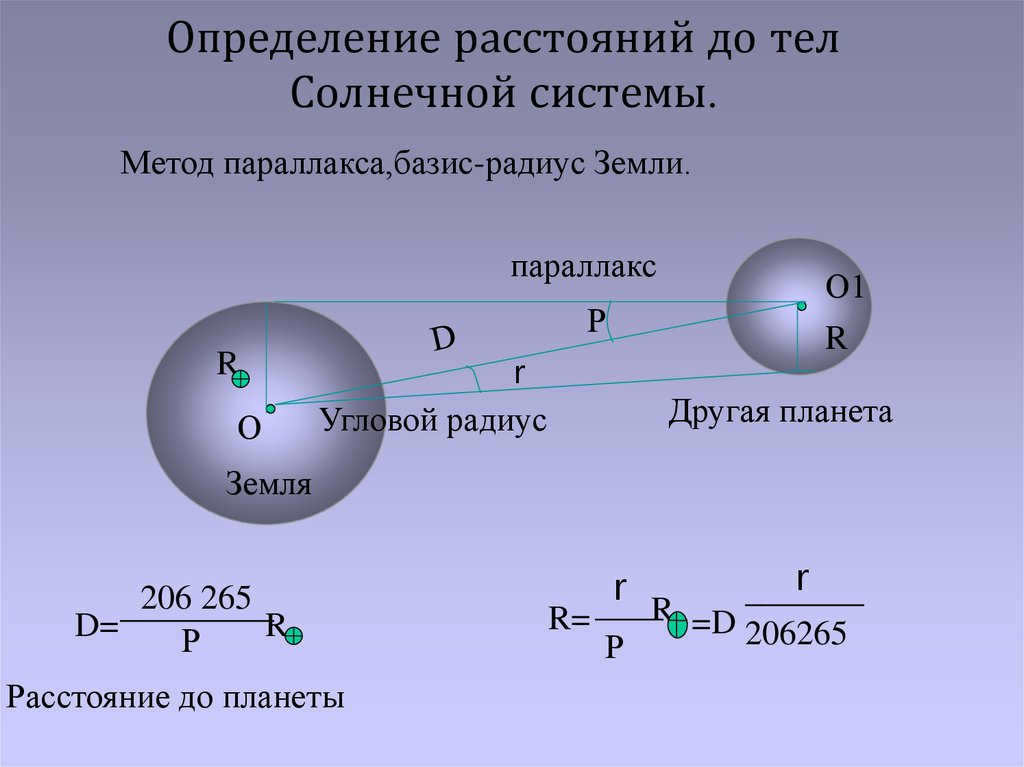
When calculating this measurement, it is important to consider that the upper layer can expand by nearly 40,000 kilometers during solar activity. Additionally, in areas without direct sunlight, the distance can stretch even further, ranging from 50 Earth diameters (600,000 kilometers) to 100 diameters (1.2 million kilometers).
Officially, the distance from the surface of the Earth to space
One possible measurement for the distance to space is 260 thousand kilometers. This is the point where the gravitational force of the Earth ends and the gravitational force of the yellow dwarf star begins to take effect.
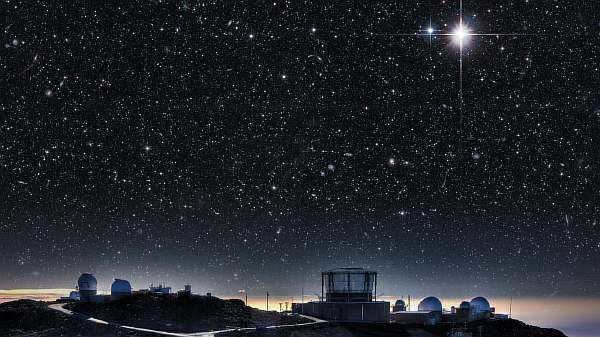
The argumentation here is quite straightforward: in the absence of a gravitational force, there is no atmosphere to be held by it. This indicates that we are in interplanetary space. In the scientific definition of space, this is the area that exists between celestial bodies and planets.
When authors of articles on internet portals and in the media mention that astronauts from the ISS venture into outer space, there is some truth to it.
It is worth noting that the officially recorded distances are 122 and 100 kilometers.
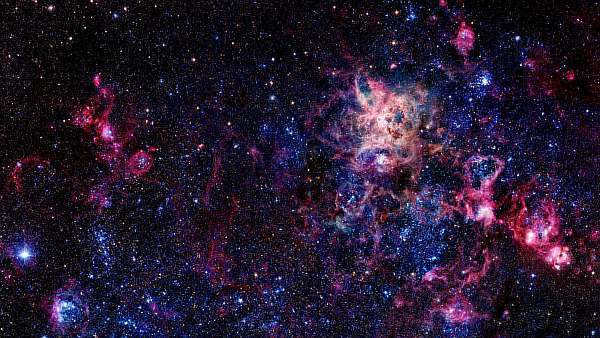
The other distance options have been validated through scientific research, recognized discoveries, and precise calculations. Therefore, you can confidently rely on them as reliable distance references.

